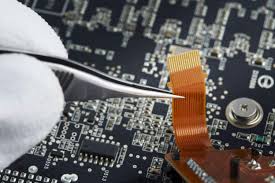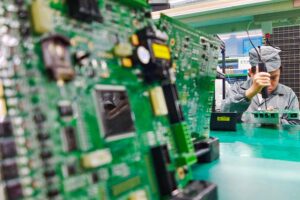With the addition of PCB alignment express, EMC design is something we electronic engineers have to consider. When faced with a design, there are 5 important attributes to consider when performing an EMC analysis of a product and design:
(1) Critical device size: the physical size of the emitting device that produces the radiation. The radio frequency (RF) current will generate an electromagnetic field that will leak through the enclosure and out of the case. the length of the alignment on the PCB as a transmission path has a direct effect on the RF current.
(2) Impedance matching: the impedance of the source and receiver, and the transmission impedance between them.
(3) Temporal characteristics of the disturbance signal: is this problem a continuous (periodic signal) event, or is it just present during a specific operation cycle (e.g., a single one might be a particular keystroke or power-up disturbance, a periodic disk drive operation, or a network burst transfer).
(4) The strength of the interfering signal: how strong the source energy level is, and how much potential it has to produce harmful interference.
(5) Frequency characteristics of the interfering signal: waveform observation using a spectrum meter, where in the spectrum the observed problem is located, makes it easy to find the problem.
Also, some low-frequency circuit design habits need to be noted. For example, my usual single-point grounding is great for low-frequency applications, but later found to be unsuitable for RF signal situations, where there are more EMI issues. I believe some engineers apply single-point grounding to all product designs without recognizing that using this grounding method may create additional or more complex EMC issues.
We should also pay attention to the direction of current flow within the circuit components. With circuit knowledge we know that current flows from where the voltage is high to where it is low, and that current always flows through one or more paths in a closed-loop circuit, hence a minimum loop and a very important law. For those who measure the direction of interference current, by modifying the PCB alignment so that it does not affect the load or sensitive circuits. Those applications that require a high impedance path from the power supply to the load must consider all possible paths that the return current can flow through.
There is also the issue of PCB alignments. The impedance of a wire or alignment contains resistance R and inductive resistance, impedance at high frequencies, no capacitive resistance exists. When the frequency of the alignment is above 100kHz, the wire or alignment becomes inductive. In the audio above the work of the wire or alignment may become RF antenna. In the EMC specification, the wire or alignment is not allowed to work below λ/20 of a particular frequency (the design length of the antenna is equal to λ/4 or λ/2 of a particular frequency), and when careless then design, the alignment becomes a high performance antenna, which makes the later debugging more tricky.
Lastly, a word about the layout of the PCB. First, consider the size of the PCB, which is too large for the system as the alignment grows, making it less immune to interference and more expensive, and too small to cause problems with heat dissipation and mutual interference. Second, and then determine the location of special components (such as clock components) (clock alignment is best not to lay the ground around and not to go up and down the key signal lines to avoid interference). Third, based on the function of the circuit, the overall layout of the PCB. In terms of component layout, related components are as close together as possible so that a better anti-interference effect can be obtained.















